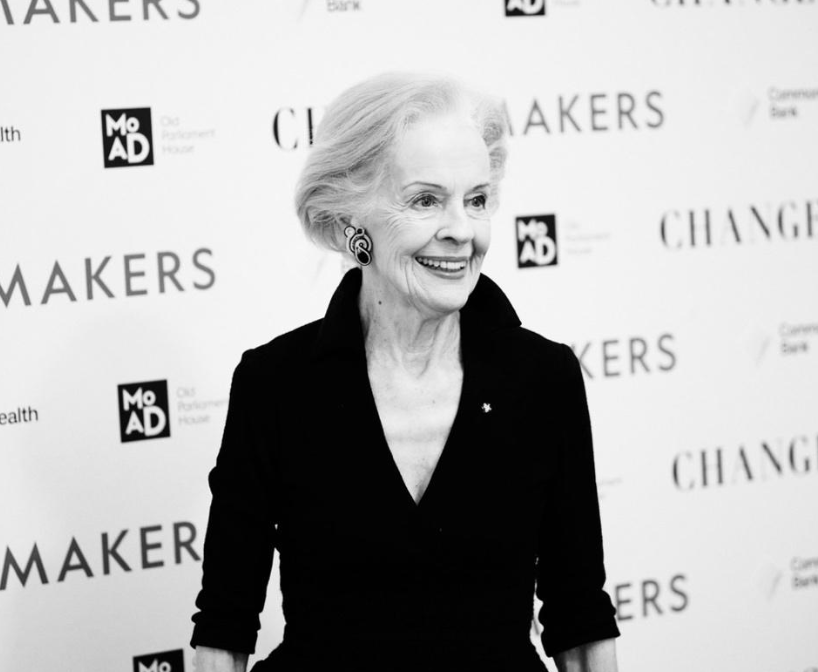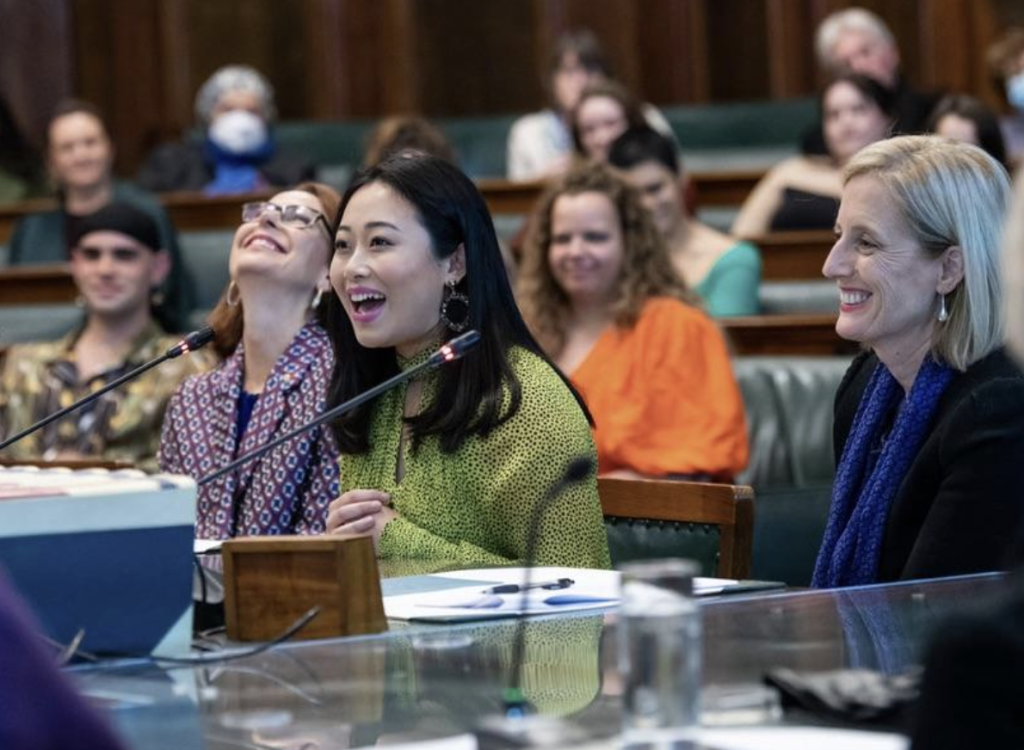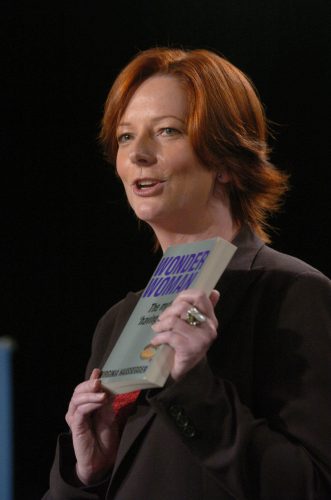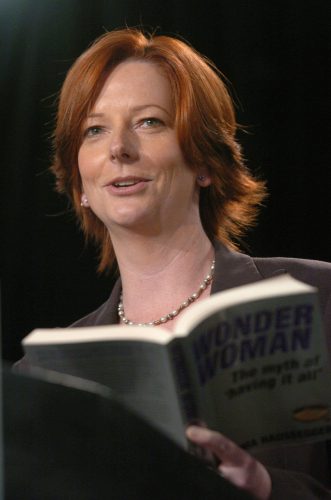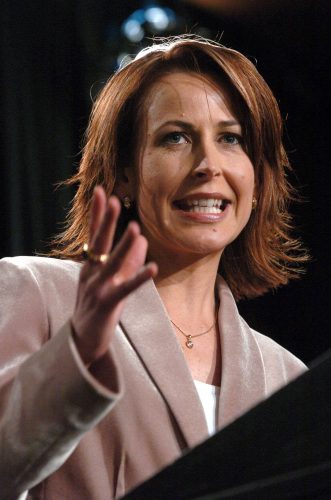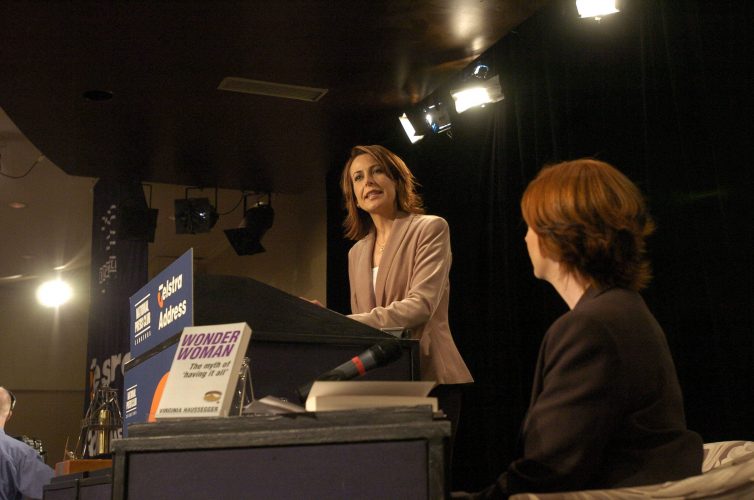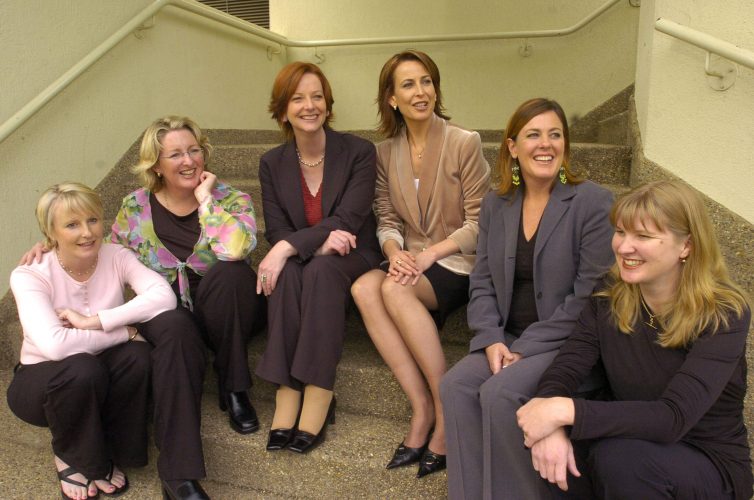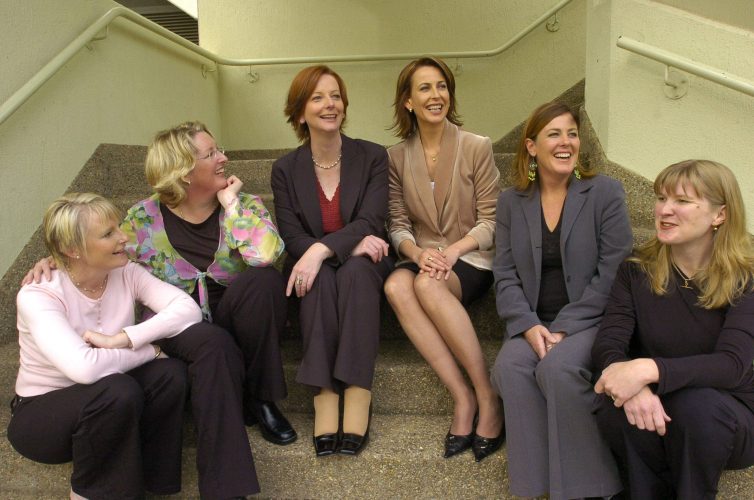On 21 June, 2022, Dame Quentin Bryce launched the Australian Women Changemakers exhibition, at the Museum of Australian Democracy (MoAD), Old Parliament House, Canberra. Since the exhibition opened I’ve often been asked, as Guest Curator, why I chose to highlight the women featured in Changemakers and why this exhibition is so important right now. In the next few blog posts, I will attempt to explain some of the thinking behind these decisions, starting with the question ‘Why is Changemakers an important exhibition and what makes it pertinent to our times right now?’
Perhaps the most striking thing about the Australian Women Changemakers exhibition is to learn how the issues and reform agendas that some of our key women Changemakers were working on 40 and 50 years ago, haven’t actually changed much from the very issues we’re still battling today!
Yes, the numbers of women in leadership and public life have changed significantly and continue to show a healthy upward trajectory, as the outstanding success of women at the recent 2022 federal election demonstrated, but the fundamental issues central to the inequality between men and women that our older Changemakers were fighting decades ago are still pertinent in 2022.
This really hit me when we managed to track down the only surviving copy of a report about an IWD women’s conference held in Mt Isa, run by the Queensland Women’s Information Service in 1986. Quentin Bryce was Director of the organisation and the detailed report, which included a beautiful hand drawn map of all the far-flung regional towns from which rural women travelled to attend the conference, outlined a two day agenda that included discussion on such things as women’s economic empowerment and fair pay; leadership and how to access power (rather quaintly referred to as “getting clout”); the inequity faced by Aboriginal women: the special needs of migrant women; access to sexual and reproductive health services; tax policy discrimination against women; universal, affordable childcare; housing affordability and discrimination experienced by single mothers and Aboriginal women; and the lack of women in political representation.
There was even a resolution at the conference demanding the appointment of a female Governor General. Ironically, Quentin Bryce, who 17 years later become our first and only female Governor General, was not mentioned in that particular discussion, or news articles about it. Rather, in her role as Director of the WIS, Bryce was already turning her focus towards what she sensed was an emerging epidemic of domestic violence in Australia. An issue she began tackling head on when she became the Federal Sex Discrimination Commissoner two years later in 1988.
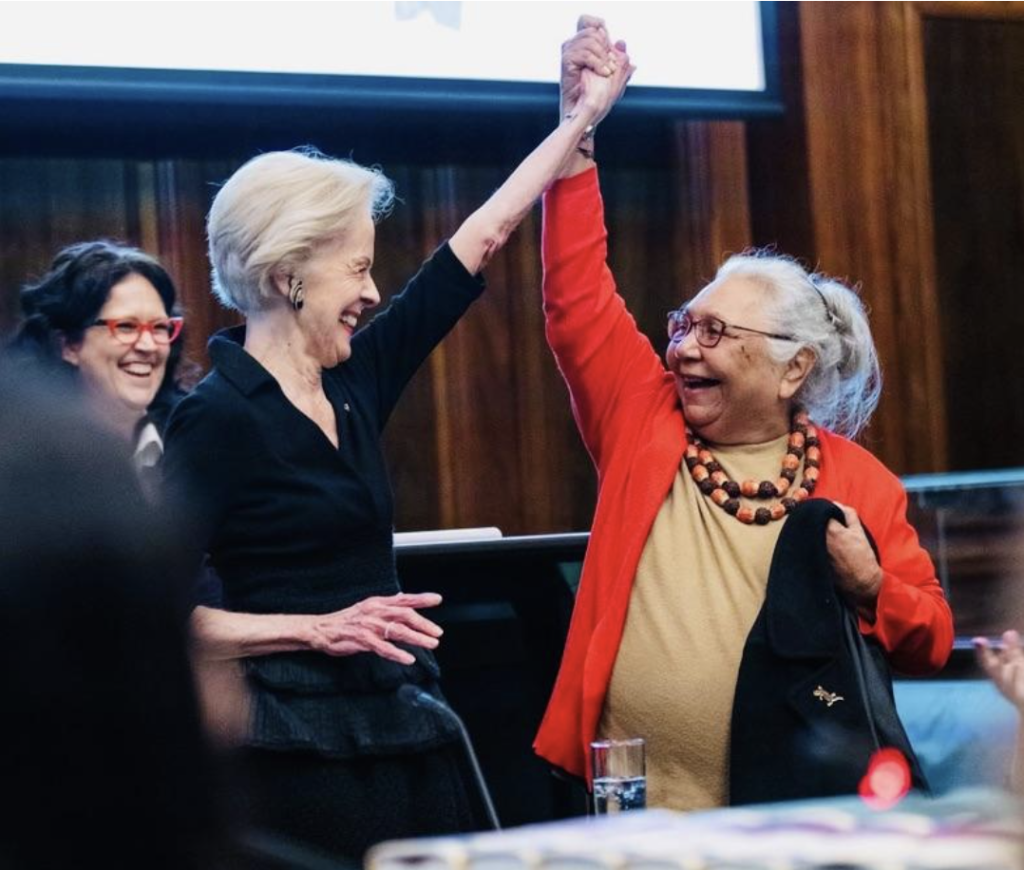
I was delighted to include in the exhibition a fading old telegram about that appointment from Susan Ryan, who was the only woman in Federal Cabinet and the architect of the Sex Discrimination Act. It was a congratulatory note to Bryce on her appointment, noting that that particular Act of parliament was Susan’s “proudest achievement”.
One of my favourite items in the exhibition, along with Anne Summer’s manual typewriter, and Natasha Stott Despoja’s Doc Martin shoes, is a tee-shirt worn by Quentin Bryce to the Mt Isa women’s conference. Not only does the slogan emblazed across the front still resonate: ‘Giving women a say… a choice … a fair go!’, but the fact this conference tee-shirt was designed by her husband, the late Michael Bryce, makes it particularly poignant. Clearly, he was a feminist partner from the outset!
Woven though the Changemaker exhibition are six key themes that link the advocacy and activism of women from mid last century, right through to today. With input from that great Australian feminist historian, Professor Marilyn Lake, each of the themes have been beautifully articulated by Changemaker’s chief curator Jennifer Forest, one of the calmest, most patient women I’ve ever worked with!
The first of those themes, ‘Hear us speak’, highlights women’s ongoing demand to have a voice in parliament, in workplaces, on sport’s fields and in the community: clearly a theme that has a powerful resonance right now.
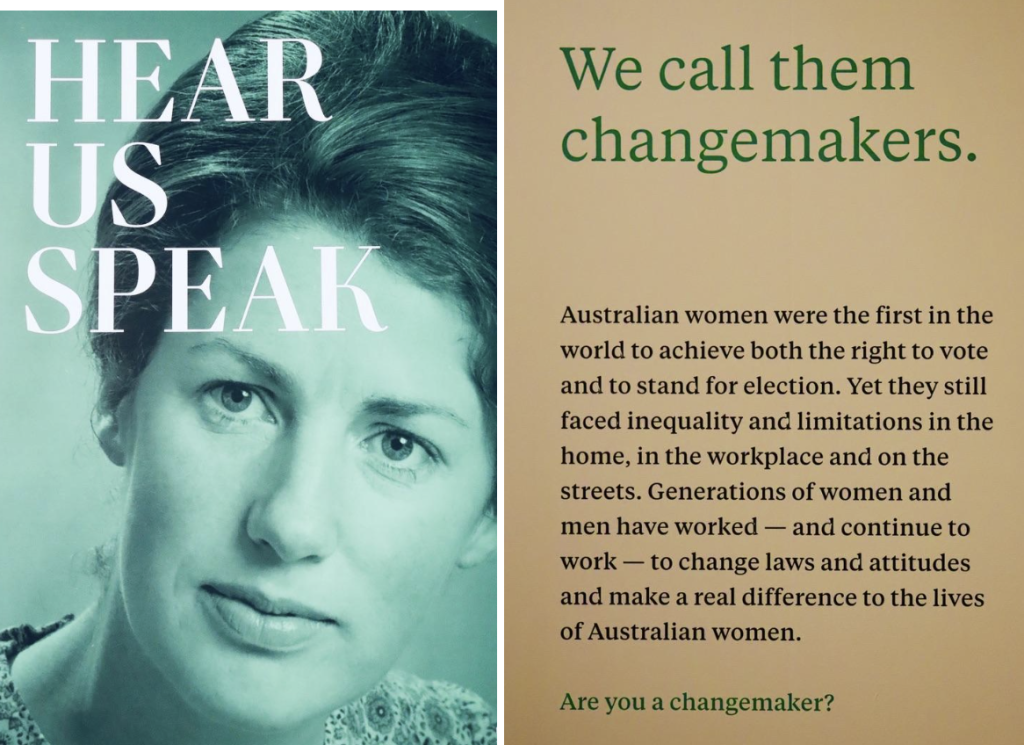
The theme, ‘ Because of her we can’, acknowledges that over time, Aboriginal and Torres Strait Islander women have always had a different experience of feminism and a unique set of intersecting challenges. Visitors to the exhibition will see there is a beautiful textile banner with this theme emblazoned across it at the entrance to Changemakers. At its centre is a carefully reproduced photo of ‘Queenie’, a proud Wadawurrung woman known as Queen Mary of Ballarat, who is the great, great, great grandmother of the young artist, Kait James, who produced this gorgeous piece. Like all the banner art in the exhibition, it is infused with deep sentiment and pride, passed on to a young generation of artists and craftivists who are transforming the echoes of history in exquisitely unique and powerful ways.
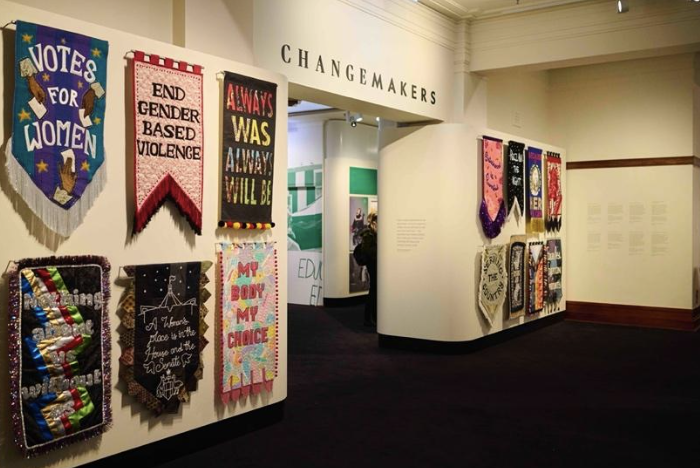
With strong contemporary resonance, the theme ‘Believe me’ echoes recent campaigns by young women such as Grace Tame, Brittney Higgins and Saxon Mullins. But, importantly, it also serves to connect these voices to the same angry demand by women throughout Australia’s history, such as feminist publisher and suffragist Louisa Lawson, whose radical publications took on the patriarchy one hundred years ago.
The theme ‘Biology is not destiny’, highlights the specific work of second wave feminists to expand women’s roles beyond childbirth and childcare. Sadly, the recent overturning of Roe v Wade in the United States and the shocking reversal of a woman’s right to take control of her own body, again highlights how the themes underpinning our Changemaker exhibition are universal, ongoing, and far from resolved.
‘Fair Play’ is a theme focusing on fairness in access and participation across all areas of a woman’s life, be it on the sports field, in the board room, in the parliament. And the final theme of ‘Pay Up’ focuses on women’s economic independence, which has seen significant strides in law reform around issues such as access to home loans and finance: but sadly, frustratingly, the vexed issue of the gender pay gap, along with women’s very low levels of superannuation and rising levels of female aged poverty, are stark reminders of ongoing gender discrimination in our nation.
I believe MoAD’s Changemaker exhibition is critically important, particularly at this point in our democratic progress, to remind us that women’s rights in this country have been hard won as a result of generations of gutsy, bold and determined women taking action and refusing to be silenced. What we’ve seen during the 2021 March4Justice, and heard recently in the voices of young women demanding policy and political reform around sexual violence and harassment, echo a strong and proud Australian history of women speaking up.
It is a reminder that we stand on the shoulders of many other women who have come before us. This exhibition focuses specifically on recent, modern-day battles in the latter half of last century, which clearly still have resounding resonance today. However, underpinning the activism represented in Changemakers, is a proud and very strong Australian tradition of female courage, determination and willingness to be outspoken in the face of inequity and outright misogyny. This tradition harks right back to those fabulous, law-breaking suffragettes, and the generations that preceded them.
